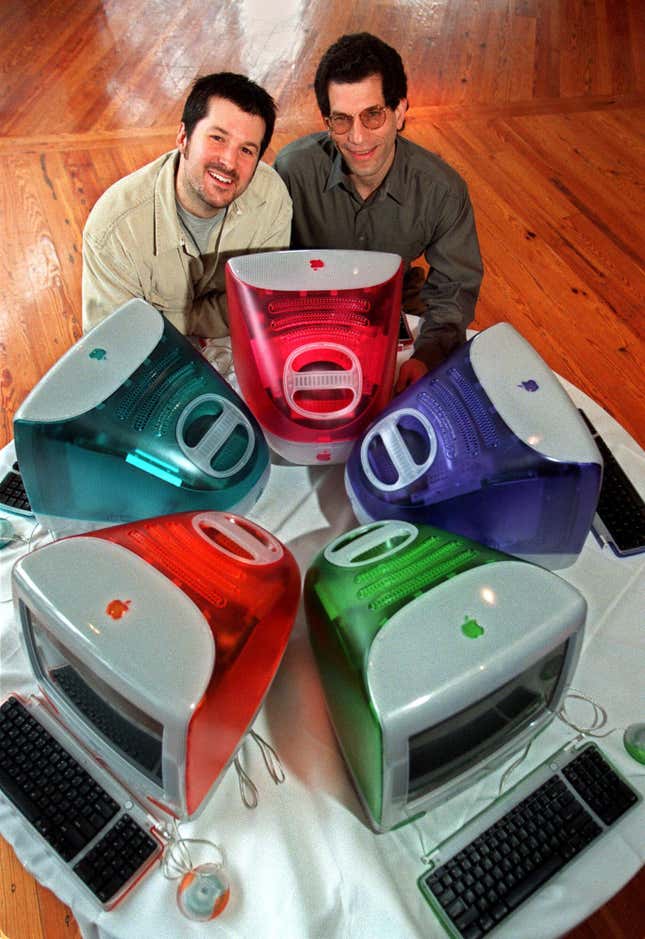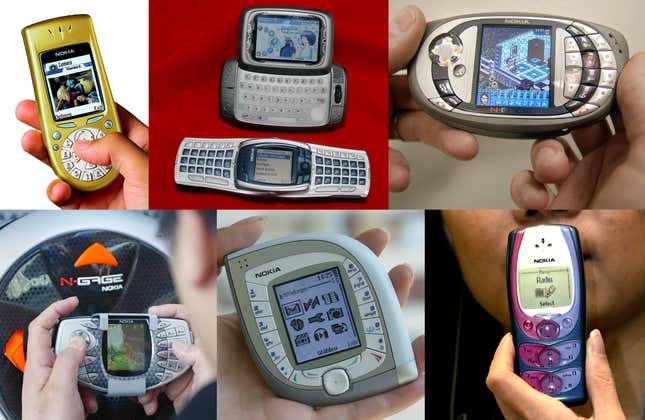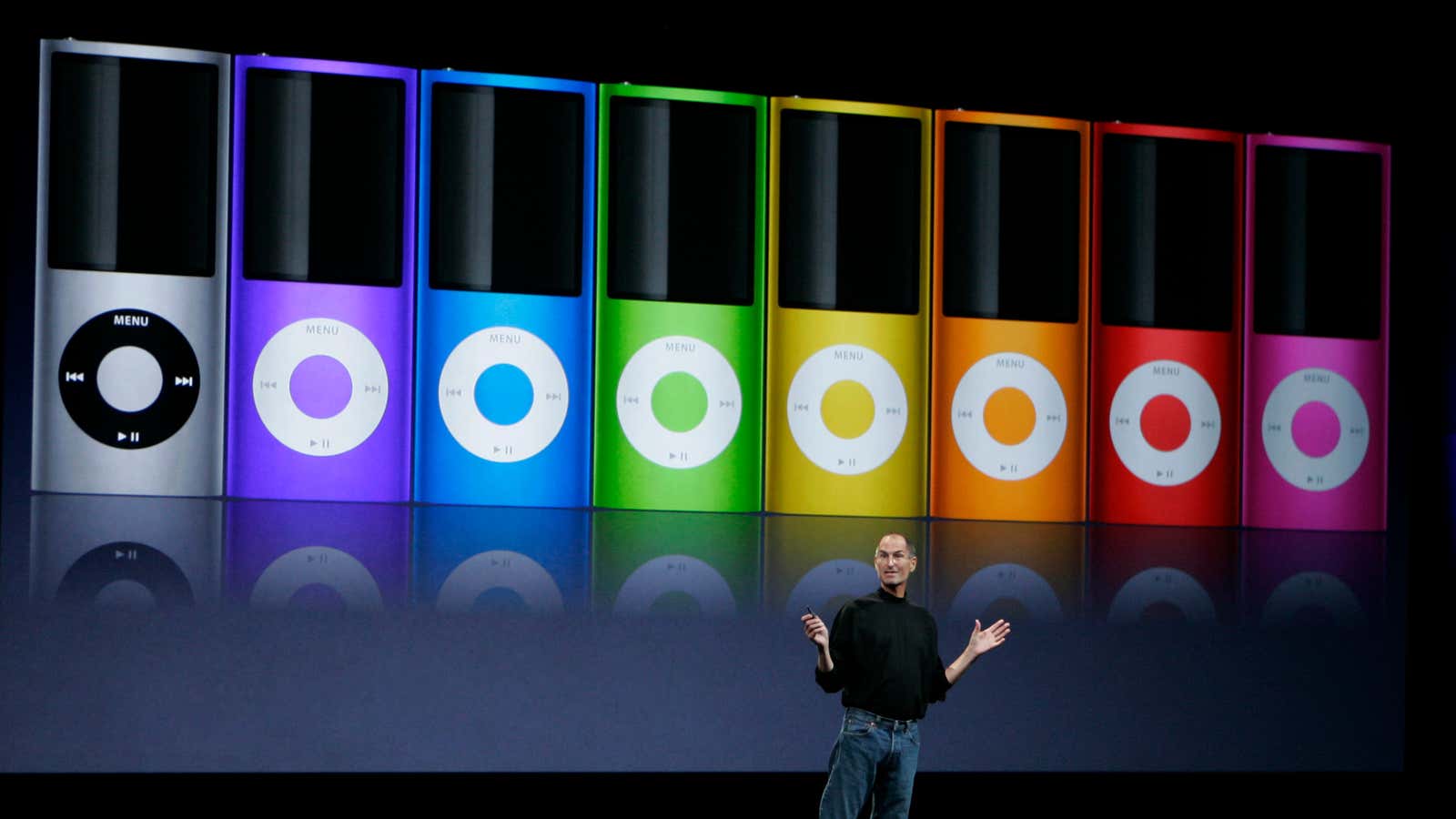There was a time when visiting Apple’s website, or one of its stores, was an explosion of color. I recently came across this random page from 2008:
When founder Steve Jobs returned to Apple in 1997, he infused a sense of color and vibrancy that had been lacking from a company that had become stuck in a rut of selling beige boxes. He introduced the iMac, a spheroid bubble of green and white plastic and glass, a little over a year later. It was like no computer on the market, and it revitalized Apple. For a while, the company stuck to this design trend, selling increasingly ambitious and playful products, including the original iPod, the iBook G4, the Power Mac G4 Cube, the iPod Nano, Touch, and Shuffle, and even the iPhone 5c. Today, the only colors you’ll find on Apple products is black, white, shades of grey, and occasionally, gold. We don’t even have rose gold anymore. Real pops of color are reserved for accessories like watch bands and phone cases.

Something changed over the last decade. Perhaps it was the hiring of Angela Ahrendts from Burberry to run Apple’s retail division and her increasing influence within the company. Perhaps it’s just because metal looks more premium than plastic does. For whatever reason, Apple looks and acts far more like a luxury brand than a consumer-technology brand in 2018.
Before the iPhone (and for a little while after), phone designs were wacky as hell. They had sliders, bizarre button layouts, fold-out keyboards, removable fronts and backs, and trackballs. Nokia had an entire line of phones that seemed dedicated to trying out new ideas. None of them worked out, really, but it was still fun to try.
In that period, the phones that everyone wanted to have were the Motorola Razr, and, for business types, the BlackBerry. The Razr was infinitely recognizable, and it was difficult to mistake a BlackBerry for anything other than a BlackBerry. The Razr sold 130 million units—impressive numbers in the pre-iPhone days. It was the phone you wanted to be seen with.

When the iPhone came out, it took that mantle and arguably still holds it, 11 years later (Apple sold well over 200 million iPhones last year). It also came define the modern smartphone design.
For the past decade, everyone rushes out to copy whatever Apple does. Dozens of Android smartphone manufacturers imitated the iPhone X’s notched-top design, and many have removed home buttons and headphone jacks as Apple has. Some even have glass backs like the iPhone, even when there’s no technological reason to have one. In short, it’s now difficult to tell one smartphone from another, whether it costs $500 or $1,000.
By refining its products to near-impenetrable pieces of glass and metal, and bringing the aesthetic of the entire consumer electronics market along with them, Apple has stamped out much of the fun within its own company, and the greater industry. There are no smartphones that take real design risks these days (barring, perhaps, the Motorola Moto Z3 Play, which holds out hope that we’ll want to modify our phones), because looking like an iPhone seems to work well enough. Even beyond phones, high-end laptops emulate the MacBook, tablets are samey, and everything else is still pretty much just a black box. (One outlier that still produces truly innovative and fun consumer tech is Nintendo.)
There are signs that fun is slowly creeping back into Apple. Its recent ad for the HomePod, directed by Oscar-winner Spike Jonze and starring artist FKA Twigs, was enjoyable and well-received, and the music videos Apple made using its Animoji are cute too.
It’s been a long time since Apple introduced a truly revolutionary product that has universally surprised and delighted audiences. Perhaps there will be something soon again—the company is hinting at something truly game-changing in augmented reality—but its aesthetic of refined elegance may never give way.
Perhaps others in the industry will look for ways to succeed beyond just drafting in Apple’s wake, and find something valuable in a return to color and joy.
